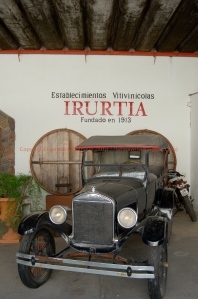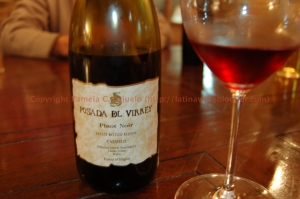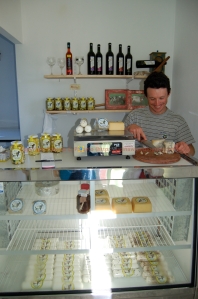News flash: An article posted Tuesday on InternationalLiving.com states that the best quality of life in Latin America can be found in Uruguay. World Cup soccer and Diego Forlan notwithstanding, I realize some of my non-Uruguayan Latin American readers may disagree. Being of Peruvian heritage myself (and let’s not EVEN bring up futbol at this point), I was simply looking for a timely news hook besides Cinco de Mayo on which I could hang this blog post.
Kidding aside, Uruguay oozes old-world charm and pristine natural beauty, as I discovered a couple of years ago when I had the good fortune to travel there on business. Never one to miss an opportunity to sample a country’s wines, I did some exploring in Carmelo, Uruguay, which looks a lot like Tuscany minus the throngs of tourists.

Carmelo, located in southwestern Uruguay, is one of the country’s lesser-known wine growing regions, and Tannat is perhaps Uruguay’s best known wine, a deep purple, full-bodied explosion of ripe blackberries and bold tannins. Uruguayan Tannat is not something you’re likely to find at the local grocery store, although more U.S. wine shops are beginning to carry it and I would say it’s worth the search.

Unlike California’s Napa Valley and parts of Argentina, Carmelo’s wine country is not easy to explore on your own unless you have a local contact or you are fluent in Spanish and have a knack for finding places off the beaten path. When I was there in 2009, most of the wineries had no web presence and wine tourism was virtually nonexistent. But therein lies the charm of Carmelo’s wine country.

Irurtia, one of the bodegas I visited, is operated by the grandchildren of founder Lorenzo Irurtia, who migrated to Uruguay from the Basque country in the early 20th century. Spread throughout the winery and grounds are mementos from the family’s past, including Lorenzo’s vintage adding machine and his son Dante’s collection of classic cars from the 1930s and 1940s.

Tasting wine at Irurtia is a little like hanging out in the gothic-style dining room of a good friend whose family happens to make wine. Maria Jose, who runs the winery with her brother, casually pours some of the wines while talking about the history of the vineyards and the vines’ French root stock. The Tannat grape originated in France and was brought to Uruguay in the late 19th century by Basque immigrants.

Irurtia has won awards for its wines in international competitions and produces a lovely Pinot Noir, so don’t limit yourself to the Tannat if you happen to go there. And yes, going there is the only way you can sample Irurtia wines as they are not yet available in the United States. The winery now has a website and you can use the contact form to arrange a visit.

Besides wine, the Carmelo region offers delights for foodies and nature lovers alike. My fellow cheese addicts will be thrilled to know you can get your fix at any of a dozen artisanal cheese makers on the road from Carmelo to Montevideo (about 165 miles). When I say ‘artisanal,’ I mean families making cheese out of their homes from milk produced by goats raised in the backyard. The epitome of farm-to-table.

You can do what I did and make stops along the cheese route as you head to Montevideo. You can also day trip it from Carmelo, but it may make for a long day. Whatever you do, be prepared for some of the best cheeses you’ll have this side of the Eiffel Tower. In fact, once you’ve tasted your cheese, pay it forward by stepping out back and personally thanking the goats who produced the milk.

I’ve never lived in Uruguay so I can’t speak to its quality of life. However, if wine and cheese are any indicator of an ideal place to live, Uruguay is a winner in my book.


How lucky! That is a huge bottle there lol I am sure the cheese on property must have been as tasty as the wine. Thanks for sharing!
A wine and cheese lover after my own heart. BIG Tannat fan here having mostly had Pisano wines. Looking forward to trying others. Thank you for spreading the gospel!
Regards,
Ernest.
No he tenido la oportunidad de ir a Uruguay, pero esta en mi lista! Obviamente buenos vinos no pueden faltar! Me encantan tus post, son bastante instructivos!
I love the photos! I love how you tell a story with the photos and mix the culture with the wine history! It’s quite enriching and refreshing!
On my bucket list! Looks like an amazing place to visit and go wine tasting!
Great story and great to meet you at camp last weekend! It was a blast 🙂
Take care…
Gracias, Gerry! It was a pleasure meeting you, as well. Thank you for reading and I look forward to dialoguing about food, wine, chocolate and all of life’s delectable offerings. Cheers!
we haven’t tried wine from Uruguay before. We usually drink local stuff..but maybe this weekend we’ll give it a try 🙂 thank pamela!
You’re welcome, Nina! Let me know how you like it. Saludos…